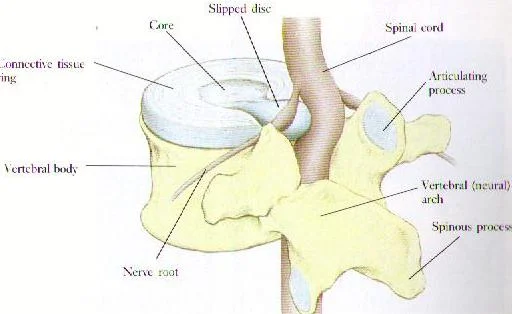Your Injury
- Abdominal Injuries
- Achilles Tendon Injuries
- Ankle Injuries
- Back Pain Lumbar Spine (Low)
- Back Pain Thoracic Spine (Middle)
- Buttock Pain
- Calf Pain
- Elbow Pain
- Foot Pain
- Groin Injuries
- Hamstring Injury
- Hand and Finger Injuries
- Headache
- Hip Pain
- Knee Injuries and Knee Pain
- Neck Pain
- Numbness, Tingling and Nerve Pain
- Thigh (Quadricep) Injuries
- Sciatica
- Shoulder
- Shoulder Blade (Scapula) Pain
- Toe Pain
- Wrist Injuries
Sciatica
What is Sciatica?
Sciatica is the name for a condition which is characterised by pain radiating along the path of the sciatic nerve, the longest and largest nerve in the body, which is as thick as one of your fingers where it exits the lower spine. It then travels through your hip and buttock and down your leg where it divides into two branches at the knee. Each leg has its own sciatic nerve.
What causes sciatica?
There are many causes of sciatica, the most common being
- disc bulge or disc herniation
Intervertebral discs form a cushion between the vertebrae of the spine. The discs have a strong outer layer and a soft gelatinous centre that acts as a shock absorber. When the outer layer of the disc becomes weak, through age or injury, the soft centre can bulge out through the weakness. If any of the nerve roots that form the sciatic nerve are compressed in the spine by a bulging disc, they can give rise to pain in the distribution of the sciatic nerve. Nerve root irritation can also occur through chemical inflammation from the soft centre of the disc.
- Osteophytes (Bony growths)
Bone spurs or osteophytes are bony outgrowths on the edges of joints. In an effort to protect the body, new bone forms on the edge of joints. The spurs can rub on nearby bone or nerves, causing inflammation. In the spine, bone spurs can intrude into the space normally reserved for the nerves, intervertebral foramen, causing sciatica.
- Piriformis syndrome
The piriformis is a muscle that lies deep underneath the gluteal muscles of the buttocks. The function of the piriformis muscle is to externally rotate and stabilise the hip. The sciatic nerve passes directly underneath the piriformis. Piriformis syndrome occurs when the piriformis muscle becomes tight, goes into spasm, or swells. When this happens it compresses the sciatic nerve beneath it. In roughly one in 7 people, the sciatic nerve passes through the piriformis instead of underneath so these people may be more prone to sciatic nerve problems.
How does sciatica feel?
The pain from sciatica is felt deep in the buttock, with pain that travels down the back of the leg, sometimes to the foot. The pain can be accompanied by tingling, ‘pins and needles’, or numbness, and sometimes by muscular weakness in the leg.
Sciatica is usually felt in only one leg at a time. Sometimes, a sensation like an electric shock can be felt along the nerve. The pain can range in intensity. Sciatica can be felt on sneezing and coughing, often with sitting and may be accompanied by lower back pain.
If you lose control of your bladder or bowels or you have severe pain, ongoing weakness or numbness seek medical attention immediately.
Management of sciatica and how to fix it
The treatment of sciatic pain is best carried out by your physiotherapist. A diagnosis is made with the use of a CT scan or MRI investigation. The confirmation of nerve irritation will assist in developing a treatment plan which may involve mechanical traction, muscle and nerve stretching, core and pelvic stabilisation and activity modification. In severe cases of sciatica, a referral to a specialist may be necessary as procedures such as cortisone injections, laminectomy or discectomy may be necessary.



